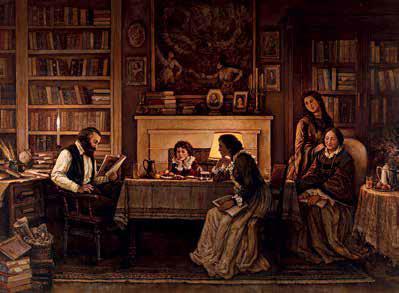The Power of Marxism
by Yi Mei
On May 5, 1818, Karl Marx was born to a middle-class family in Trier, Germany. He couldnt have imagined that 200 years later, his philosophy would still hold such heavy influence in China, on the other side of the world.
To commemorate the bicentennial of Karl Marxs birth, the National Museum of China in Beijing is presenting an exhibition titled “The Power of Truth,” which runs through August 5.
When Marx was 17 years old, he wrote in a graduation essay titled Youths Considerations in Choosing Occupations that if one chose a lofty career to best serve mankind, his soul would be enriched by making sacrifices to benefit all people. Marx lived up to his words, and his ideas on communism have been put into practice around the world and served as the ideological foundation of several communist states in the 20th century.
The exhibition presents illustrated narratives of various stories to form a comprehensive timeline of the life and work of the German philosopher, as well as how his ideas inspired the Chinese to build a communist nation. Visitors can find many books, documents, letters and photos, as well as 24 works of art produced by renowned Chinese painters.
“Marxism has not only profoundly changed the world, but also profoundly changed China,” declared President Xi Jinping, also general secretary of the Communist Party of China (CPC) Central Committee and chairman of the Central Military Commission, at a conference at the Great Hall of the People in Beijing to honor the 200th anniversary of Marxs birth.“History has shown that the fate of Marxism is tightly connected to the fate of our Party and the fate of the Chinese nation.”
The exhibition echoed Xis words, showcasing how Marxism took root, sprouted and blossomed in China. Reverberations from the October Revolution in Russia helped introduce Marxism-Leninism to China and kindle new hope in the eternal Chinese struggle for survival, setting the stage for the birth of the CPC.
Since then, the CPC has combined the fundamental principles of Marxism with the realities of Chinese revolution and construction, transforming the Chinese nation from the “sick man of East Asia” to one who has stood up by uniting and leading the people through long-term struggle.
One exhibit is a copy of an issue of Wan Guo Gong Bao (Review of the Times) from 1899, which was one of the first introductions of the names of Marx and Engels in Chinese media. One section of the exhibition displays copies of the Communist Manifesto published in different languages and countries over the years, evidencing the far-reaching influence of Marx and Engels. Among them is a Chinese version published in 1938, with hand-written notations by late Premier Zhou Enlai in 1943 in Yanan, Chinas revolutionary cradle, in Shaanxi Province.

The exhibition also explores Marxs family life and the deep love between him and his wife, Jenny von Westphalen, with whom he had seven children.
An oil painting titled A Revolutionary Family by 74-year-old Sun Jingbo, a retired professor from the Central Academy of Fine Arts, depicts a sweet family scene in which Marx is reading Shakespeare to his wife and three daughters. The youngest artist involved in the exhibition was 45-year-old Jin Rui, who contributed an ink drawing portraying an ambitious teenage Marx surrounded by his friends at middle school.
“My generation grew up with firm belief in Marxism,” says Sun, the eldest of the featured painters. “We admire and follow his philosophies. But in this painting I tried to focus on his other side as a caring husband and father. The close family relationship and his love for his children greatly influenced his personality.”
“Marxism is an open theory that is constantly developing and always stays at the frontier of the times,” says Feng Yuan, vice chairman of China Federation of Literary and Art Circles, a sponsor of the exhibition. “As President Xi said, we must base our work in China and embrace modernization, the world, and the future while consolidating Marxism as our guiding ideology. I hope the exhibition conveys this message.”

